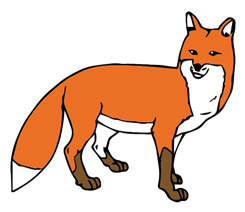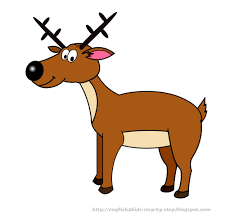Home Learning
KS3
Year 7
Costume Design
Lesson One
Watch “The Fox and the Mouse “short movie, link below:
https://www.youtube.com/watch?v=k6kCwj0Sk4s&ab_channel=ESMAMovies
Select two different characters from the film that you could create a costume for if this was turned into a stage production.
1. Sketch, Colour and Label (Details/Materials/Accessories) the costume design for your two chosen characters.
You can use a template attached to sketch the costume designs onto – if this is easier for you. As you are working electronically you should try to hand draw and then scan/photograph.
Explain why you chose these two-character costumes.
Are any elements of the costumes symbolic?
(For example, colour / texture etc.)
Lesson Two
Choosing the correct costumes for characters is vital in both period and modern plays. They must be appropriate to the time and culture in which a drama is set and to the status of the characters.
Research the following questions below and explain and justify within your answers.
1). What is the role of costume in performance?
2). What makes a good costume?
3). How do you make a costume for a Theatre?
4). Why is costume important?
Year 8

Lesson One
Watch the animated short film “Oh Deer!”
Link: https://www.youtube.com/watch?v=O1C9zOQpKG4&ab_channel=CGMeetup
Sketch a ‘Set Design’ for a stage production of this story.
Top Tip!
• Remember the theatre stage is deep, so you can build up layers in your design and get perspective.
• Set and furniture can come from different places to land on stage:
• The FLY TOWER is above the stage, and set can be lowered from above
• The TRAP is under the stage, allowing piece of the set to come up through the floor
• At each side of the stage are the WINGS where set and furniture can be pulled or pushed onto the stage.
The shape and nature of different performance spaces and stages affect the way that plays are staged and performed. Think carefully about the audience experience and what they see.
Lesson Two
Research at least four different types of staging. Here is a useful web site
https://www.bbc.co.uk/bitesize/guides/z26bjxs/revision/1
Create two posters for two of the types of staging. - include, diagram, audience positioning, information on formation of acting area.
Year 9
 Year 9
Year 9
Lesson One
Watch the animated short film “The Present!”
Link: https://www.youtube.com/watch?v=WjqiU5FgsYc&ab_channel=ThePresent
Now using the short film as stimulus write a play script. You must use the original three characters and any dialogue used. You will need to hear the thoughts of the dog so give him lines, but the boy will not be able to hear him. You could possibly change things and let the boy and dog have a conversation.
Your script needs to be two sides of A4.
Lesson Two
Leading on from the last lesson. Now create an original story that could be used as a play script. Write a synopsis (brief outline) of the story and then create a character profile for each of the characters you have created.
Things to think about when creating a character:
- Name - Give your character a name that people can remember.
- Setting - Where would your character live or spend time?
- Appearance - What does your character look like? Do they have any unusual features like a scar or glasses? Use lots of adjectives (describing words) to bring your characters to life.
- Job - What does your character do? Do they go to school? Are they a ballerina? A bank robber?
- Clothing - What does your character wear? This can help people get to know the character better.
- Likes and dislikes - What does your character like and dislike? Do they love football? Do they hate Brussels sprouts?
- How old is your character?
KS4 GCSE Drama
Years 10/11
Please note that bespoke work will be set by the subject teachers and emailed to students, with reference to their individual portfolios for Component 1 devised work and Section C Live Performance. The following lessons below can be used as revision lessons for Section B of the written paper.
Use of performance space and interaction with other characters
In Noughts and Crosses, there are scenes that are romantic, some that are tense, and others violent. There are also intimate family scenes and large public scenes. In order to convey the relationships between the character and the action of the story you must consider how the performance space can be used and how the characters might interact with each other.
Lesson 1
Focus on Act 1, Scene 20 (pages 54-55), when Callum tried to get Sephy out of the shopping centre before the explosion. Below is a thrust staging configuration. Copy the diagram and then draw and label where you would position and move the actors to achieve the following:
- Where will Sephy be positioned at the beginning of the scene?
- Where will Callum enter?
- Where will other characters appear in order to establish that this is a busy shopping centre? How will their movements differ from Callum’s?
- How can Callum show the urgency of the situation?
- What interaction will there be between Sephy and Callum?
- Where will the explosion take place on the stage? How will they react?
- How can this scene be staged to create tension and also show the destruction of the explosion?
Lesson Two
Look closely at “Sephy: No! No. He’s a friend…..” to “Sephy: Callum, enough!”
Make notes on what movements and actions could be used to create tension.
Consider:
- What are the differences between Sephy’s and Callum’s physicality in this scene?
- What is the effect of Sephy breaking off to speak to the audience in middle of the scene?
- What is the proximity of Sephy and Callum through this scene? Are there times when they are closer and times when they are farther apart?
- How will Sephy show that she is finding it difficult to run as fast as Callum?
- Could special physical effects, such as slow motion, stylised movement or choreography, enhance the scene?
Lesson Three
Focus on Act 2, Scene 8 (pages 76-78). Copy another version of the staging configuration and consider how the use of performance space and interaction between the character can create tension and excitement.
Use arrows to indicate key moments when the characters might move.
Indicate where:
- Nought and Cross witnesses are positioned (and whether they will be standing or sitting).
- The Clerk will be positioned.
- Ryan will enter.
- Sephy is when she speaks to the audience.
- Ryan will stand when the hood is put over his head.
- The Prison Governor will enter.
- The ‘riot’ will take place.
Tip: when writing about effects that you want to achieve through performance, some to consider are: Tragedy, Tension, Romance, Surprise, Terror, Sympathy, Excitement, Pity, Alarm, Anticipation, Comedy and Status.
Lesson Four
Use your knowledge of the play to consider character movements. Find at least one instance (there might be more than one) when a character displays the following movements or actions:
- Walks towards a table. Sephy, Act 1, Scene 6 (page 25)
- Falls asleep.
- Falls to the ground.
- Changes clothes.
- Covers another character’s head with a hood.
- Runs with another character.
- Hides a letter.
- Hides behind a tree.
- Punches another character.
- Rests their head on the shoulder of another character.
- Steps forward when two other characters are fighting.
- Grabs another character’s arms.
- As a family, sit together eating dinner.
Lesson Five
Look closely at Act 1, Scene 2 (page 16-19).
Imagine you are playing Callum and make notes on the following skills.
- Proximity: How close are you to the rest of you family at the beginning of the scene? Are there moments when you move closer or attempt to move away?
- Levels: Do the levels you use in this scene change, for example when you are eating supper or when you and Jude square off?
- Touch: Is there any physical contact between you and your family members, such as when you try to get Lynette’s attention or when you and Jude confront each other? Do you help to pass the food or clear up?
- Stage positions: Where on the stage are you positioned at the beginning of the scene? At what points do you move to new positions?
- Pace or style of movement: Do you move quickly? What affects the speed of your movement? Do you pause or change tempo at any point? Is the style of your movement in any way different from how it is in the first scene of the play? Are there non-naturalistic movements, such as still images or slow motion?
- Reactions: How do you react to Lynette’s behaviour? How do you react when Jude insults you? How do you react to your parents’ different opinions about your attending Heathcroft?
Now answer the following exam-style question:
You are performing the role of Callum
Focus on pages 17 and 18, from “Lynette: What am I doing here?” to “Lynette: I can’t be a Nought. I just can’t”.
Explain how you might use the performance space and interact with the actors playing Jude, Ryan and Lynette to create tension and show their relationships to the audience.
KS5 A-Level Theatre Studies
Year 12 & 13
Please note that bespoke work will be set by the subject teachers and emailed to students.